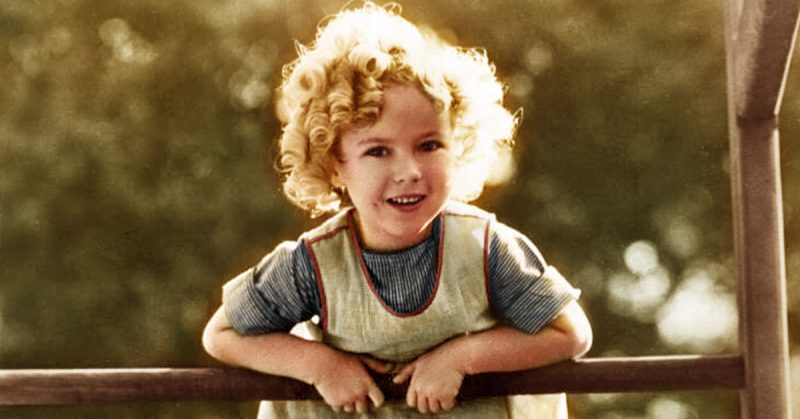Hollywood’s biggest star during the Depression years of 1935 to 1939 was a singing, tap-dancing child with blond ringlets, dimpled cheeks, and relentless optimism. It’s no surprise that Shirley Temple’s sunny innocence was a welcome antidote to dark days of scarce employment and bread lines. But her hold on the troubled nation’s imagination also sparked outlandish but persistent rumors. Some claimed her hair was fake. Others believed the tiny preteen was actually a 30-year-old midget who herself had a 10-year-old daughter!
Shirley Jane Temple was born in Santa Monica, California, in 1928, the third child of a bank manager and a former dancer who had grown too tall for ballet. Mother Gertrude was determined to make a star out of her only daughter and enrolled Shirley in a dance studio when she was 3. There a minor producer discovered her and cast her in Baby Burlesks, which were suggestive one-reel satires of current political events casting preschoolers for all the roles.
Young Shirley landed a contract for 26 films over a two-year period for $50 per week. The way the producers treated the children back then would be considered criminal today. In her 1988 autobiography Child Star, Shirley Temple remembered that when she or the other kids misbehaved, they were made to stand in a cold puddle. And if that didn’t work, a “final satanic option” was to being forced to sit on an ice block in a “black box.”
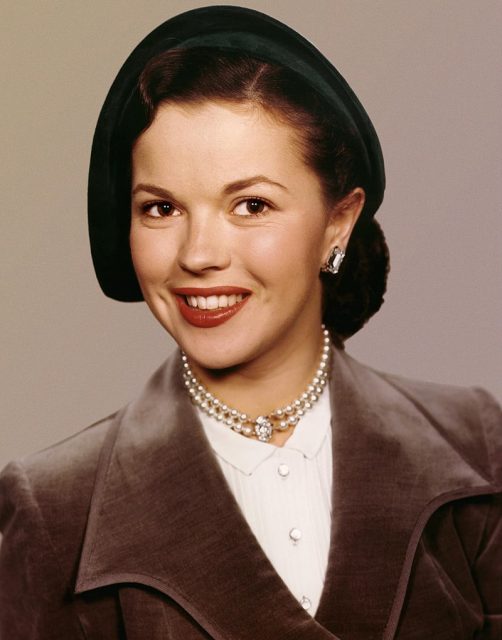
Amazingly, this treatment did not cool her warm disposition, not even when she recalled it many years later. “So far as I can tell, the black box did no lasting damage to my psyche,” Temple wrote in Child Star. “Its lesson of life, however, was profound and unforgettable. Time is money. Wasted time means wasted money means trouble.”

In 1933, a Fox producer invited Shirley to take a screen test, which won her a role in her first full-length film, Stand Up and Cheer! Two movies quickly followed, Baby Take a Bow and Little Miss Marker, and their success established the young child as a major star and a major asset to the studio.
Shirley Temple’s salary was raised to $1,000 a week; her mother, as “hairdresser,” made $250; the family received an additional $15,000 for each finished film. These sums were stratospheric during the Depression, when many people could barely rub two nickels together.
She sang her iconic song “On the Good Ship Lollipop” in a 1934 movie crafted specifically for her, Bright Eyes, which would earn her a kind of honorary Oscar. The country was officially in love with the real-life singing, dancing doll. A Shirley Temple doll became the coveted item of girls everywhere, generating by 1941 a staggering $45 million in sales. Even the president loved her. “As long as our country has Shirley Temple,” President Roosevelt said, “we will be all right.”
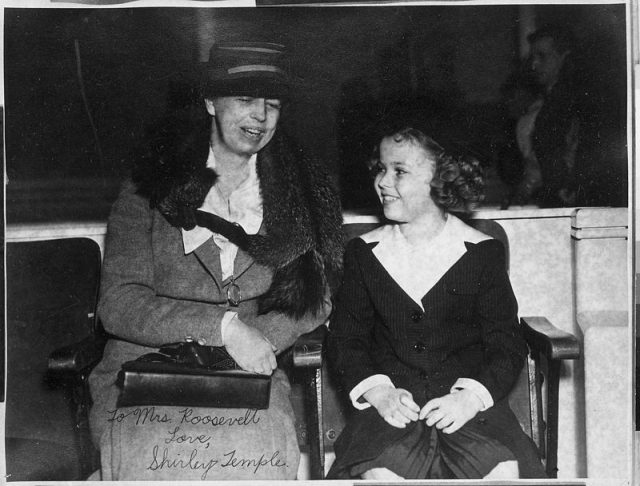
Not everyone was charmed by Temple’s posturing as a miniature adult, however. In England, Graham Greene wrote a scathing and deeply creepy review of Temple’s favorite movie, Wee Willie Winkie, noting her “mature suggestiveness of a Dietrich,” citing her “neat and well-developed rump,” calling her “completely totsy,” and elsewhere suggesting she may be a midget. The review spurred the studio and the Temple family to sue for libel. They won; courts ordered Greene to apologize and pay 3,500 pounds. (Modern readers theorize Greene’s review was meant as satire.)
It’s impossible to know if Greene started or just perpetuated the tall tale, but it grew as it bounced across the Atlantic, reaching conservative Midwest newspapers. The Rhinelander (Wisconsin) Daily News made note in March 1938 of “the persistent rumor, mostly heard abroad, that Miss Temple herself is an adult midget with a 10-year-old daughter!”
Other “evidence” cited was that Shirley never seemed to lose her baby teeth—in her movies she never had that endearing gap-toothed smile of most young children. That’s because studio heads made her wear dental caps and bridges to fill any missing-tooth holes.
The rumor was so pervasive that the Vatican sent an emissary to investigate. Back in the day, the Vatican sometimes served as a neutral third party. As Temple recounted in her autobiography, Father Mario Massante told her family he was there to ask about “‘a persistent rumor that Shirley Temple is no child at all.’
“Mother’s eyes widened in astonishment. ‘The rumor is, Shirley is a midget.’ ”
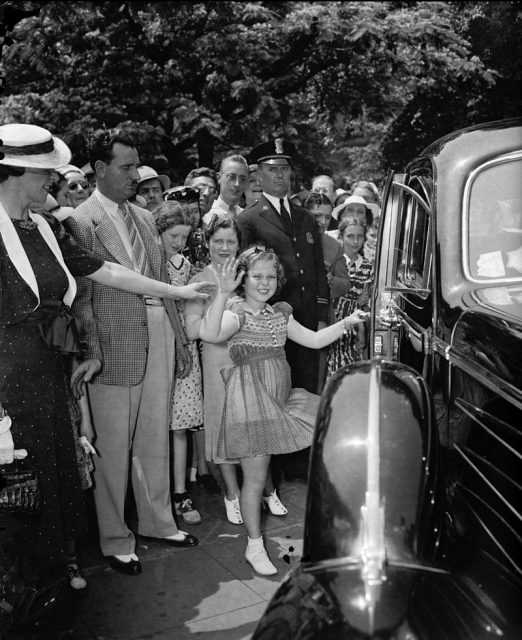
As Shirley recalled, she sat stock still in silence as the adults absorbed the outrageous claim. “ ‘Obviously, she is not,’ said Father Massante,” Temple wrote.
Shirley Temple also suffered the indignity of people so convinced that her hair was fake that they would reach out and give her curls a good yank to see if they were actually a wig. Ouch!
“Fake hair might have been less of a chore,” she wrote with dry good humor in her autobiography, describing the weekly ritual of washing and setting her hair, which involved her mother’s melting a corner of Ivory soap, scrubbing her scalp, and rinsing with malodorous vinegar, “which stung my eyes and diminished my later appreciation for tart salad dressings.” While her mother rolled her hair in cloth to create the ringlets, her father read aloud to her from the Wizard of Oz.
For four years, Shirley Temple was Hollywood’s biggest star, eclipsing the Number 2, Clark Gable. She was photographed more often than President Roosevelt.
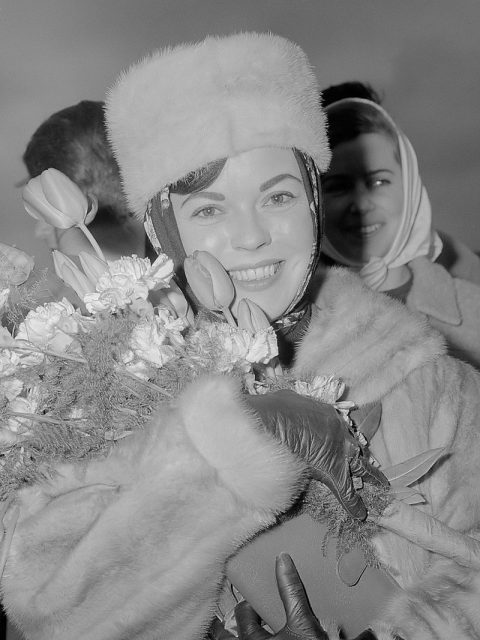
By the 1940s, however, Temple had become a teen, and her babyish innocence had evolved into a tomboyishness that didn’t translate into the same box office magic. She would go on to make several more movies, but her film career had peaked. She retired from filmdom in her early 20s.
Shirley Temple did have one more surprising role in her life, however. She married Charles Alden Black in 1950, became a prominent Republican fundraiser, and won ambassadorships to Ghana under President Ford and Czechoslovakia under the first President Bush.
Shirley Temple died in 2014 at the age of 85, as cheerful, level-headed, and sunny as she’d been as a tot.
